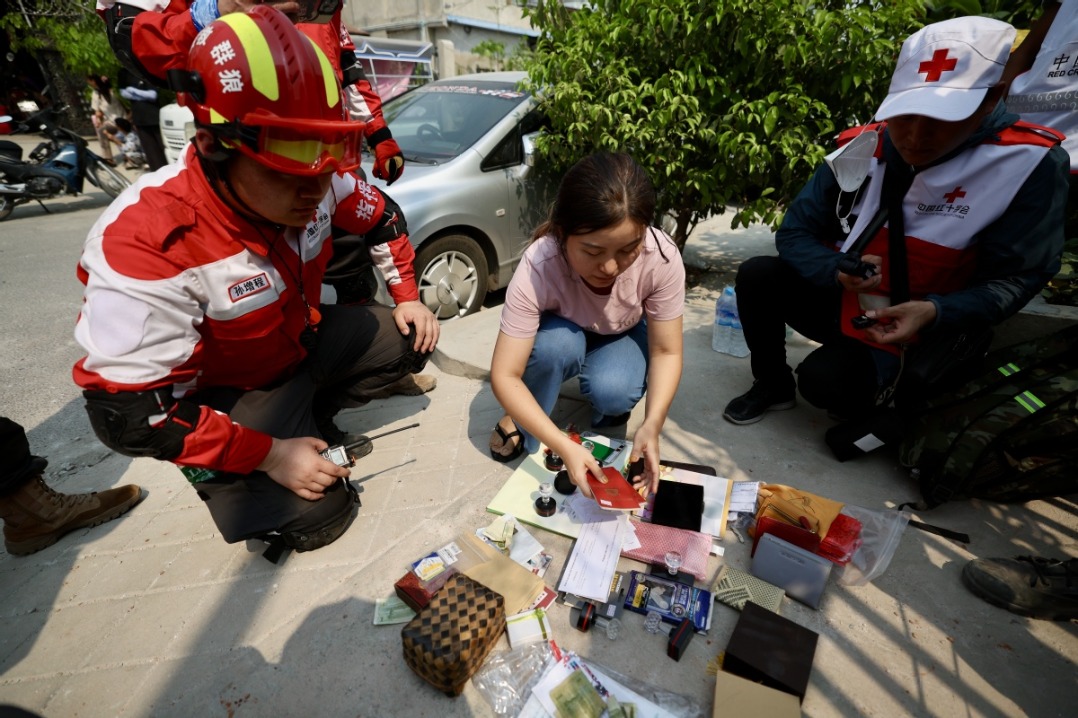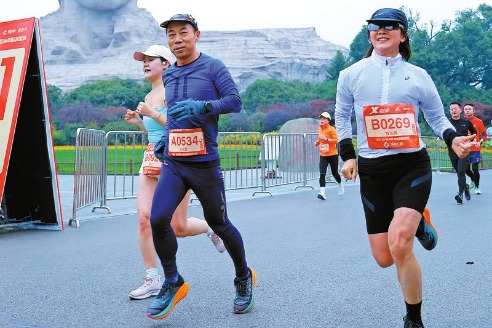DeepSeek enhances non-coal mine safety

China has launched its first artificial intelligence-powered monitoring system for non-coal mines, marking a major step in digital mining. Developed by a company in Hubei province, the system recently proved its effectiveness when it detected an emergency 580 meters underground, triggering alarms and a swift response.
Earlier last month, alarms rang deep within a mine shaft following a dangerous surge in carbon monoxide levels. The AI-powered monitoring system quickly accessed data from wind speed sensors, tracked personnel movements, established virtual perimeters and activated emergency broadcasts. The entire response, from the initial alert to resolution, took just 178 seconds.
The system was made possible by integrating the DeepSeek model into the monitoring framework, developed by Hubei Lonmon Phosphorus Chemical Co, based in Baokang county in Xiangyang city. It was introduced on March 12.
"There are no domestic precedents for this solution," said Dong Songwu, deputy general manager of the company, in an interview with Hubei Daily. "Our engineers gathered data from the mines during the day and refined the AI algorithms in the lab at night. They transformed seven decades of mining accident reports, numerous national and industry safety regulations and millions of monitoring datasets into valuable training resources."
In early 2023, the company's tech team tested various foreign AI models but found them inadequate for managing complex geological conditions and vulnerable to data security issues, leading to repeated failures.
A breakthrough came early this year with the release of the Deep-Seek model, which offered advanced semantic understanding and multimodal processing capabilities, giving the team a promising new direction.
Lonmon, in partnership with Hubei Greman Mining Technology Co, has developed Mailing, an AI-powered system incorporating the DeepSeek model. The system integrates production scheduling, risk identification and other functions, shifting from traditional "human defense" methods to a proactive "smart defense" approach, said Gu Wenbo, director of Greman Mining.
Gu said the Mailing system autonomously detects hazards, initiates corrective actions and coordinates with other systems to address violations and trigger alarms, significantly improving efficiency and safety.
AI-driven optimization can boost overall mining utilization by more than 10 percentage points, enabling the effective use of an additional 80,000 metric tons of ore annually while reducing waste rock by 250,000 cubic meters. The environmental benefit is equivalent to preserving more than 2 hectares of woodland, according to the company.
The integration of smart devices within the AI system also significantly reduces enterprise costs.
"Take unmanned inspection robots, for example," Gu said. "In the past, at least two workers per shift were needed to inspect the distribution chamber, with at least two shifts each day. Now, hanging rail robots conduct inspections around the clock, monitoring real-time metrics such as temperature, humidity and carbon monoxide levels. This automation saves up to 600,000 yuan ($82,923) annually."
Unmanned operations also represent the highest standard of safety and security, Gu added.
"Previously, two individuals per shift were needed to ensure strict adherence to safety measures. Now, unmanned operations can effectively guarantee personnel safety."
In recent years, Hubei has focused on consolidating mineral resources and establishing environmentally friendly mines, prioritizing the development and ecological preservation of key resources such as phosphorus and iron ore.
Technological innovation in resource efficiency not only supports regional industrial growth, but also establishes a sustainable model for balancing resource extraction with environmental protection, said Tian Yuepeng, an official at Baokang county's emergency management bureau. "For Hubei, with its rich mineral reserves, the introduction of this AI-integrated system marks a significant step in boosting productivity and sets a clear path forward," Tian said.






































